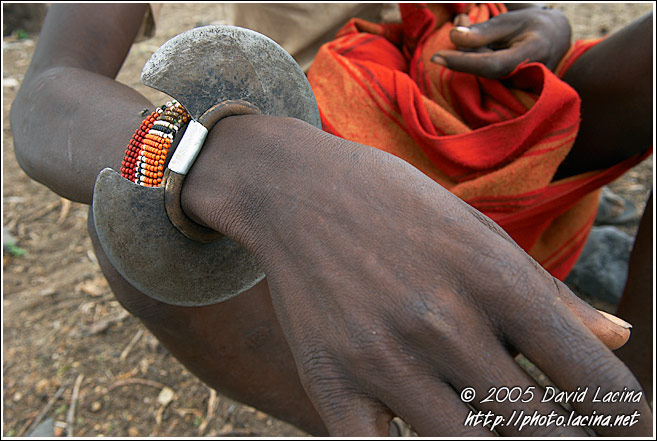My knowledge of medieval African civilization isn't great, but I'm going to need more than Port Nyanzaru to hold my interest in the setting, so I'm going to introduce a couple tribes who live in the hinterlands around the city right now, with the intent to fill in more as the sandbox picks up/focuses.
------
The Ido:
a northern alliance of tribes, the port of Nyanzaru was originally an Ido city--the Ido city, in fact, while the balance of the tribespeople lived in smaller towns in its hinterland, supplying the port with its foodstuffs and tradegoods. When the Omuans came northwest escaping the destruction of their kingdom, they coopted the city for themselves. The Ido still populate the hinterlands in well-regulated towns governed by Oloyas (chiefs), and also make up a large fraction of Nyanzaru's population--and are not entirely happy with being supplanted by the Omuan migration.
Among other things, the Ido are known for their excellent bronze work:
As excellent metalsmiths, they make fine swords, spearheads, shields, armor, etc. that are the envy of other tribes. Ido hunters are proud of their weapons and use them to bring down elephants and triceratopses, etc., the bodies of which are apportioned with the heart and the back right leg to the Oloya, the tusks, the liver, and the back left to the hunter-killer, and the rest of the animal split amongst the tribe/village.
It is the responsibility of the Oloyas to maintain watch on the coasts or on the jungle for pirates or undead or both (as the case may be), and to call up his warriors to deal with any trouble. These warriors include both foot and cavalry (horse- or dinosaur-mounted!).
The Turkana:
nomadic herders that follow their herds of zebu cattle, goats, or the smaller species of hadrasaur (the latter being nomadic only around large bodies of water, and being of tribes who do not consider fish taboo but willingly eat it). The tribes of the Turkana move with their animals, following good grazing, protecting their animals from predators and raiders and meanwhile partaking in raiding against antagonist tribes.
The various Turkana tribes maintain a sophisticated oral history of their mutual raids, antagonisms, and friendships; bloodfeuds are long remembered, but so are friendships, especially the close friendships between so-called "banter brothers". Men who are banter brothers may banter/insult/joke with each other as brothers may, regardless of the tribes each other belongs to ... there are oral epics detailing banter brothers bringing their tribes into friendship after centuries-long hatreds, but also tragedies of banter brothers driven to the bleakest ends of human emotion by the mutual hatreds of their tribes' larger wars.
Turkana tend to have little physical wealth other than their herds; their main possessions are their unique wrist-knives, the stools that they use both as seats and as head-rests, and the staves that they carry as walking- and beating-sticks.
The Turkana are great drinkers of palm-wine, which they must acquire by trade or by raid, being too nomadic to cultivate/brew it; in the stories, banter brothers are often born in the midst of a palm-wine drunk taken by an entire tribe while one of the banter brothers is a foreigner ...
The Ik:
semi-pastoral mountain-dwellers, the Ik grow what they can during the agricultural season (I need to figure out wet/dry seasons for a calendar in this setting ...) and supplement that with hunting and gathering, especially when they can't grow anything. They dwell on high plateaus and mountain crags in villages that are almost entirely woven together with stockades of tight-woven brambles containing family huts with individual courtyards. Such stockaded villages, built on secluded heights, make Ik villages fairly well defended against monstrous or human raiders--the only real terror are the flying pterafolk with whom the Ik compete in the heights, and against whose flying raids the stockades to little good.
The Ik are too disparate and semi-nomadic to have permanent villages or seats of power, but their homeland in the heights means that they have constant access to the caves and dark places under the thrust-up earth where strange things dwell. They have a great respect for serpents and other chthonic spirits, and their alliance of tribes maintains a number of permanent oracles and pythonesses who live within the caves close to the underworld spirits, whom the Ik (and other peoples) may approach when in need of a better understanding of the turnings of the spirit world.
The Ik also have a great respect for blacksmiths--esp. those of the Ido, or the Albino Dwarves--and will seek such folk out for certain spiritual affairs.
------
The Turkana and the Ik are modern tribes, not medieval ... like I said, my knowledge is lacking and based on what little I've read. Would that it were more! (and I ultimately intend it to be)
This post is sparser than I intended, but as a mere starter I hope to develop more as the players head out into Chult at large and run into villages, herds, townships, etc., etc.



How did this workout for you. I'm disappointed that ToA does not document Chultans outside of Port Nyanzaru but few have tried to fill it in.
ReplyDelete